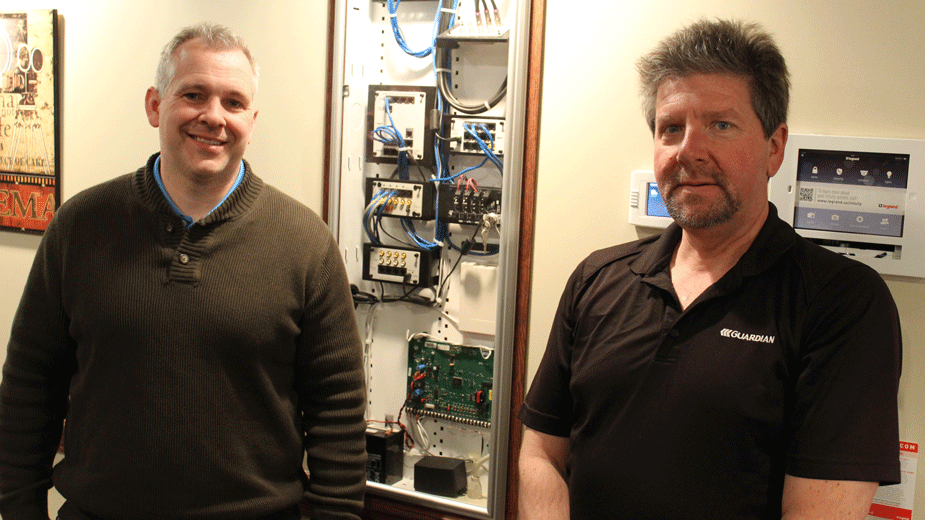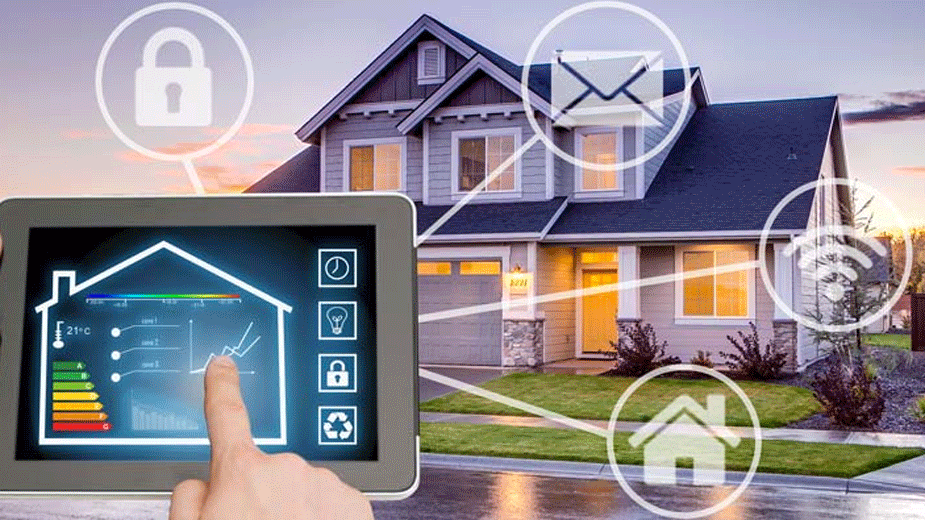Technology Makes Houses ‘Smart,’ Living Easier
YOUNGSTOWN, Ohio — Imagine driving home after a long day of work. You pull into the driveway and walk up to the front door. It’s unlocked and, as you enter, the lights are on and your favorite jazz track is softly playing.
It may seem a bit over-the-top, but you did have a rough day, after all. And all this welcome-home ambience is possible through a growing market of “smart” home devices.
Through a network of app-controlled devices – that range from thermostats to light bulbs to alarms to speakers – you can control just about everything in smart homes using the phone you carry every day.
“Everything’s app-driven now. Smartphones were the game changer for our industry. It opened up a lot of control opportunities,” says Paul Guzman, co-founder of Smart Solutions Unlimited Inc., Poland.
When Guzman launched his company 11 years ago, house automation was high-priced and mainly done in houses bigger than 5,000 square feet, he says. But with smartphones gaining popularity and the technology behind smart devices becoming cheaper, the field is accessible to just about everyone.
“Technology over the last 10 years – especially in the last three or four – has become affordable, reliable and repeatable,” confirms Kevin Santelli, general manager of the Austintown office of Guardian Protection Services.
The technology behind most smart devices is known as Z-Wave. It works much the same as Wi-Fi, but on a different bandwidth.
 Most smart homes start with alarm systems, says Guardian Protection Services manager Kevin Santelli and security consultant Bob Till.
Most smart homes start with alarm systems, says Guardian Protection Services manager Kevin Santelli and security consultant Bob Till.
The technology’s distinct advantage over traditional wireless networks, however, is that Z-Wave is a mesh network, where each device strengthens the network signal.
Combined with smartphone abilities such as geolocation, that means control over your house can be controlled from your pocket or, better yet, automated entirely.
“I can set a circle around my house so that if my phone gets outside of that, it lowers my house’s temperature, locks my doors, makes sure the lights are off and automatically arms the alarm system,” Santelli says.
Another feature of Santelli’s personal system, he continues, is a video camera connected to his doorbell. When someone rings it, he gets an alert on his phone and a prompt to call up a video of who’s at the door. If he’s away, he can use a speaker to talk to whoever’s shown up or if it’s, say, a neighbor, open the door for them.
“Security is the No. 1 driver,” Guzman says. “The alarm and video surveillance is first and foremost and then they realize what else they can do.”
Santelli says a vast majority of smart homes customers begin with security systems and then build their systems from there. Since most smart devices are wireless, installation is far easier – a few hours rather than a few days, notes Guardian security and technology consultant Bob Till – and the systems can be built piecemeal.
“As you add the automation devices – which are usually $150 to $300 per device – each one makes the price a la carte,” Santelli says. “If we’re talking about a dream house with a home theater, audio everywhere, a great security system and mounted TVs, you could get to $10,000 easy. But that’s a very high-end system.”
Industry analysis firm Statista projects the American smart home market to reach $46.2 billion this year and revenue for the industry to reach $112.8 billion by 2022.
A report from Juniper Research released last autumn estimates that by 2022, 55% of U.S. households will have at least one smart speaker and the total number of smart devices will reach 175 million.
That growth is fueled in part by devices such as Google Home, Amazon’s Alexa and Echo and Apple HomePod. At the 2017 Consumer Electronics Show, Amazon announced 33 other products that would be compatible with Alexa.
At this year’s show, held in January, Belkin and Apple announced their own house automation systems while 3M announced the Filtrete Smart Air line of Bluetooth-enabled HVAC filters that reminds users when to change filters and provides real-time air quality feedback.
The growing market has opened doors for local startups. Mike Savko and his wife, Carla, are preparing to launch Savko Home Builders.
While the company isn’t aimed entirely at designing homes around smart devices, they do play an important role. The couple renovated a house and installed several smart devices, he says, and when they later decided to build a new house, they approached it with the idea of using smart devices when possible.
“I’ve always been a ‘customist,’ tinkering on cars or renovating houses,” says Savko, who has an engineering degree from Youngstown State University. “If someone wants a really nice house – not just nice to look at, but nice to live in – it makes sense to have someone with a mechanical background because we can figure out how to make it work.”
In designing homes around smart devices, the main concern is thinking about the wiring of a house, he says.
“You need to think ahead. We may have to run extra data cabling or multiconductor wire that will feed lights in hard-to-reach locations. There are outlets where you may not normally put an outlet,” Savko explains. “As far as how things like the Nest [a brand of smart thermostats] are installed, it’s the same wires as a normal thermostat.”
A 2016 report from The Harris Poll found that while millenials are more likely to use smart entertainment devices, Gen Xers and baby boomers were more likely to use devices such as smart thermostats.
“They’re making it more accessible for the common homeowner,” Savko says. “It doesn’t have to be something exclusive to the million-dollar home.”
Copyright 2024 The Business Journal, Youngstown, Ohio.



